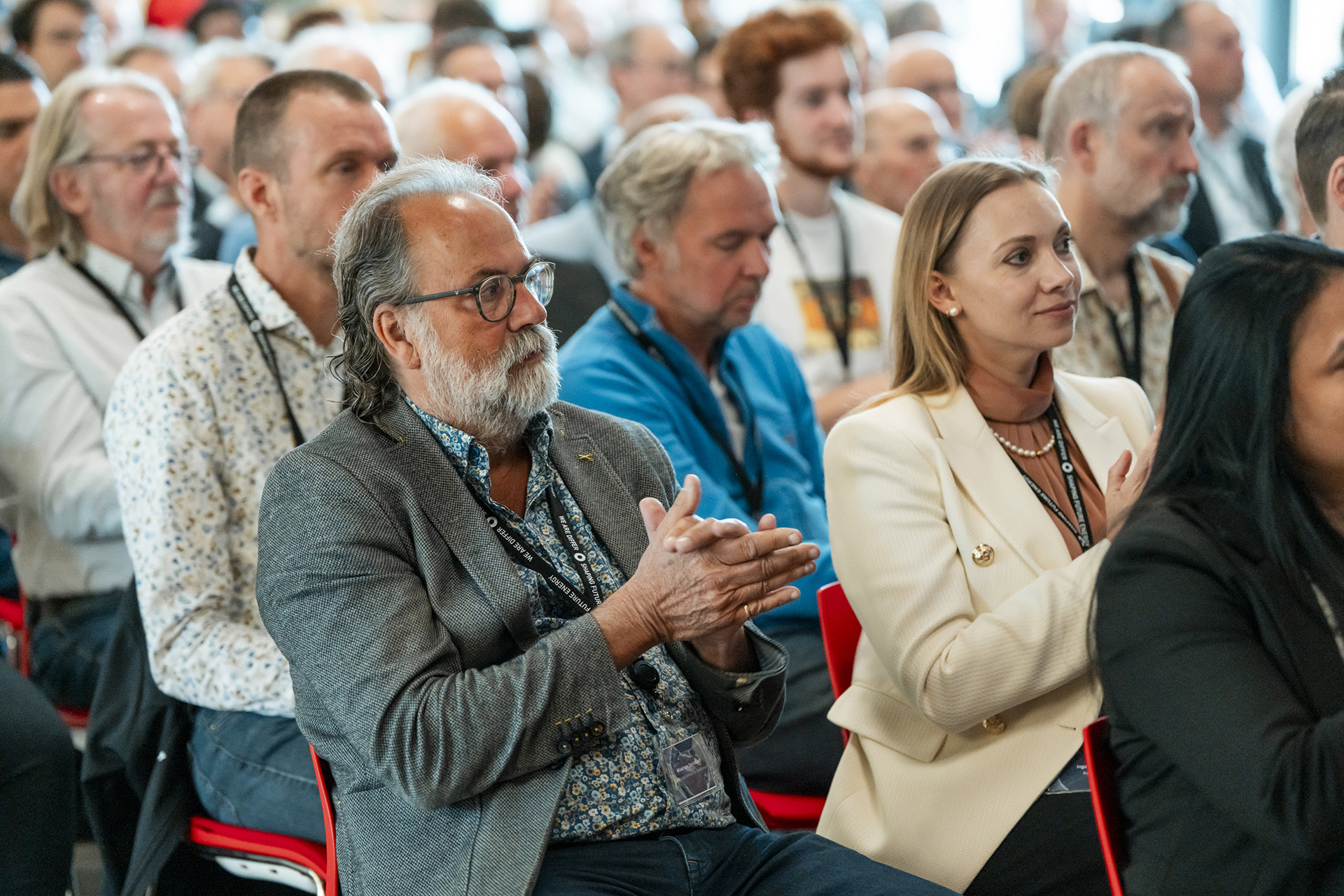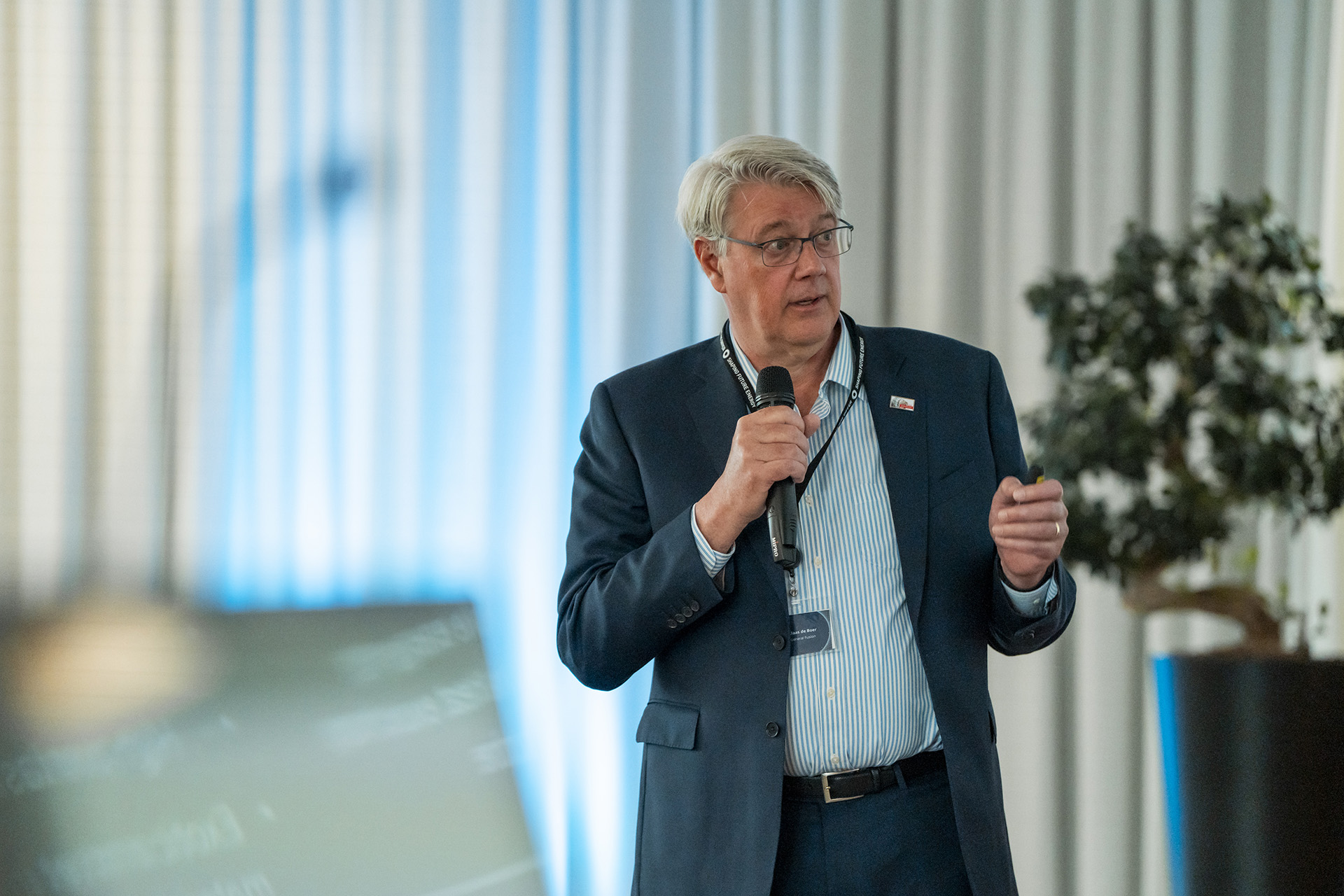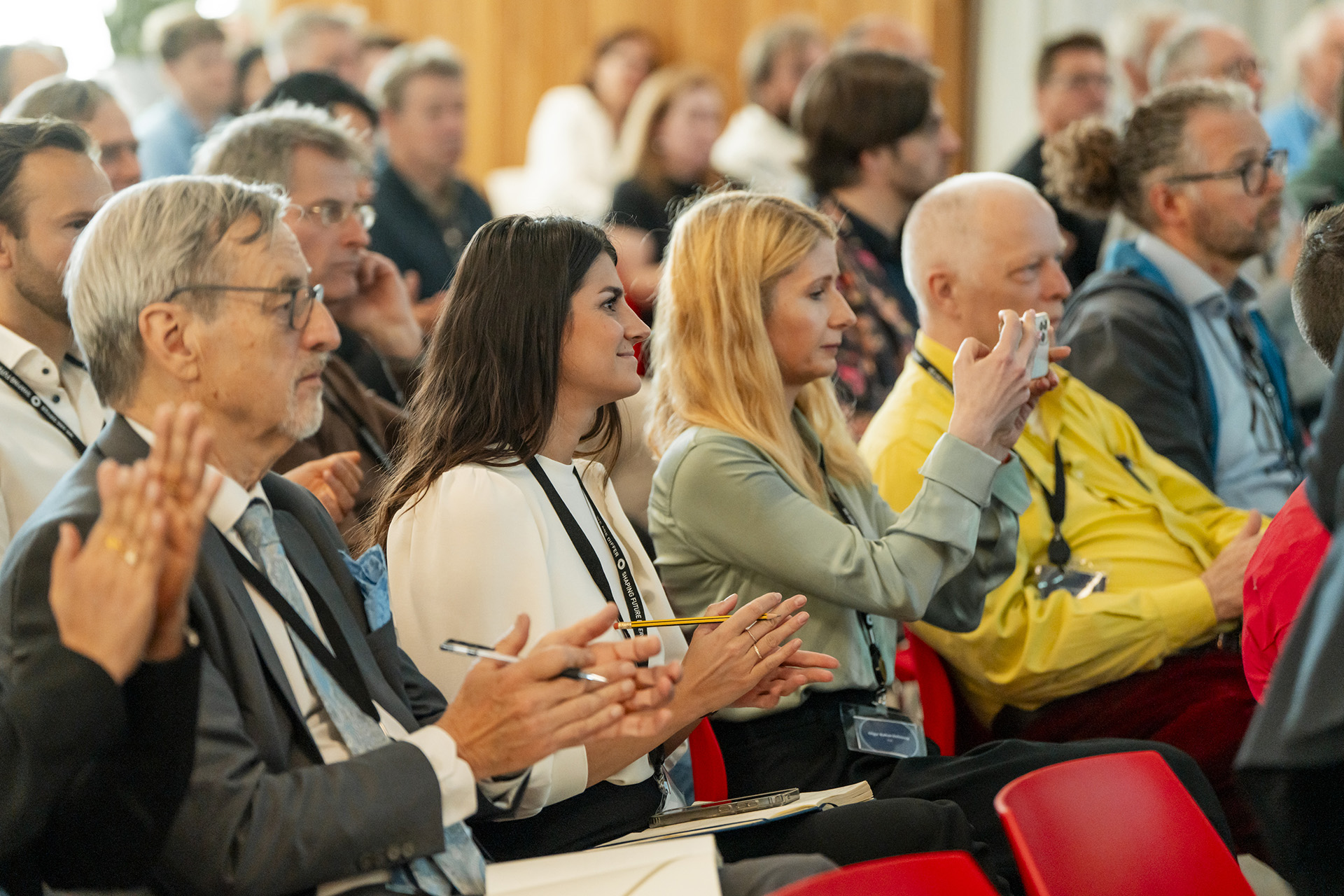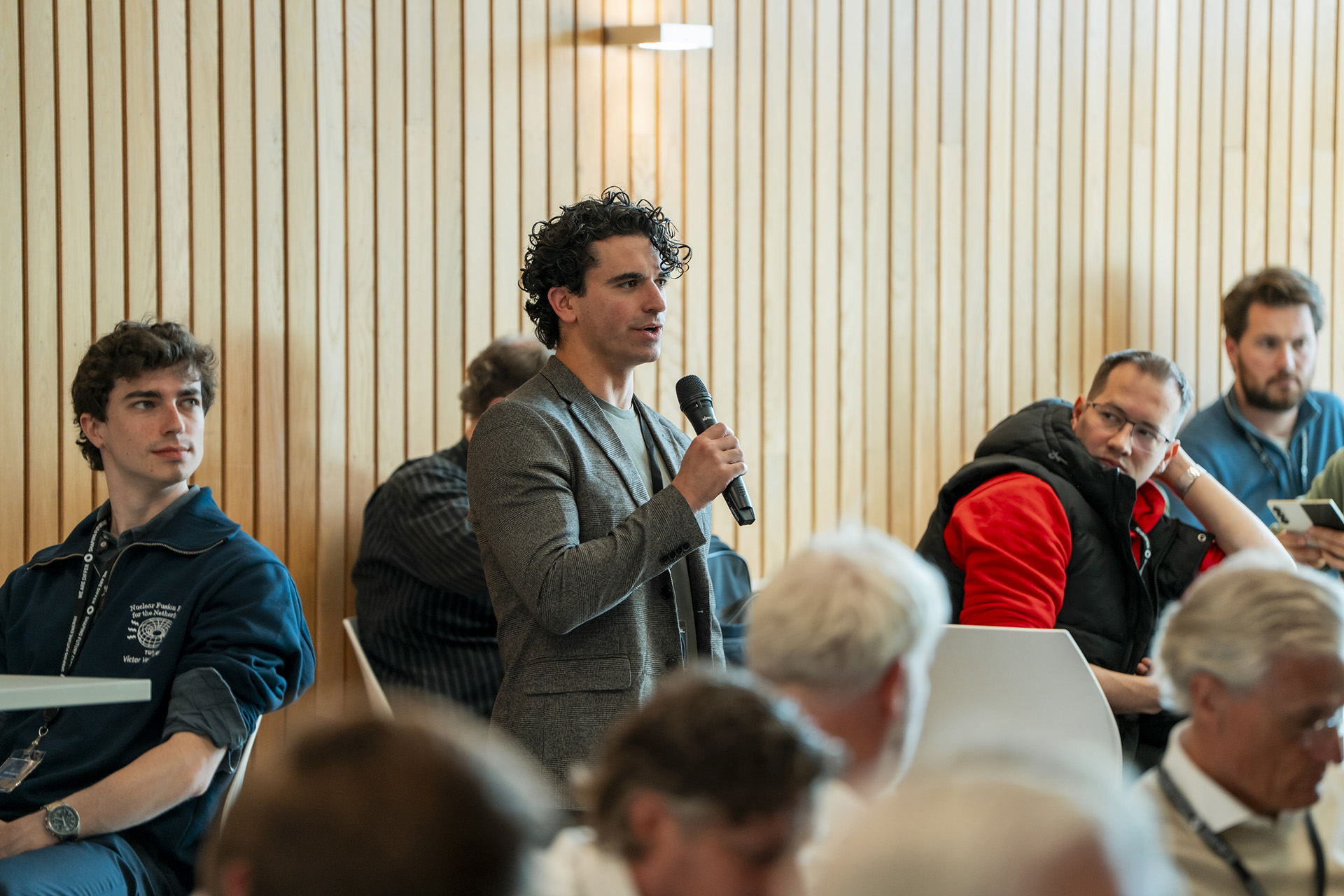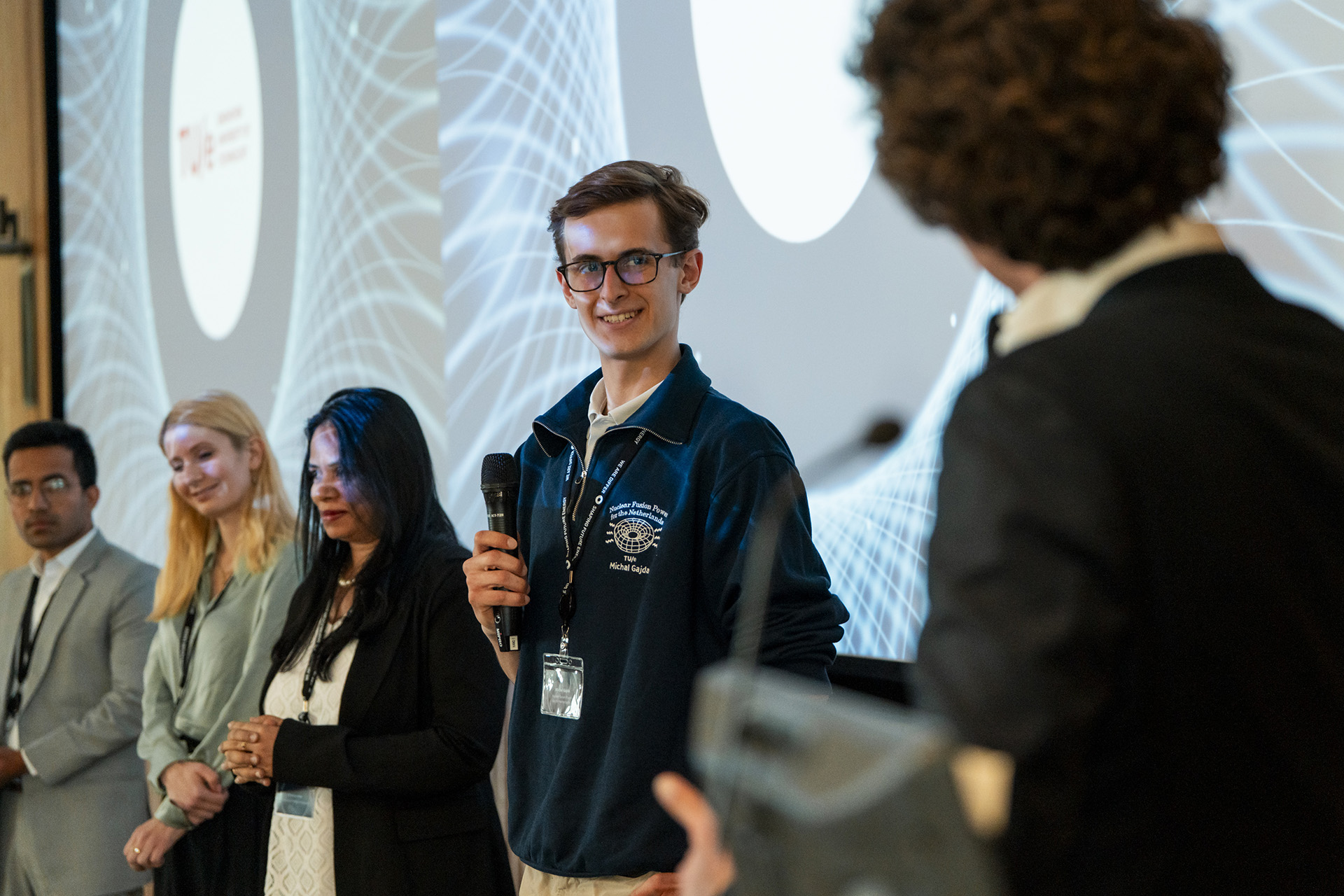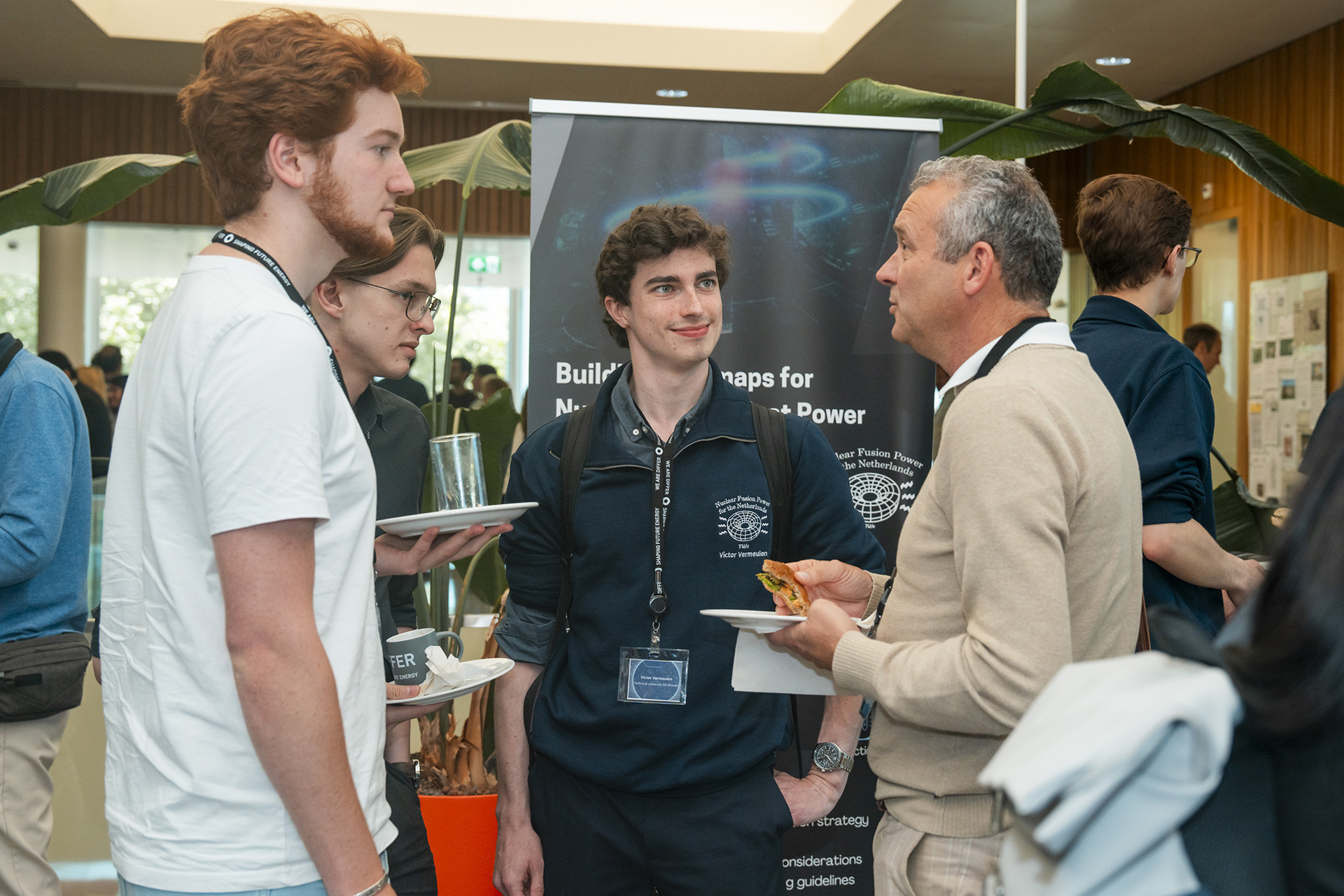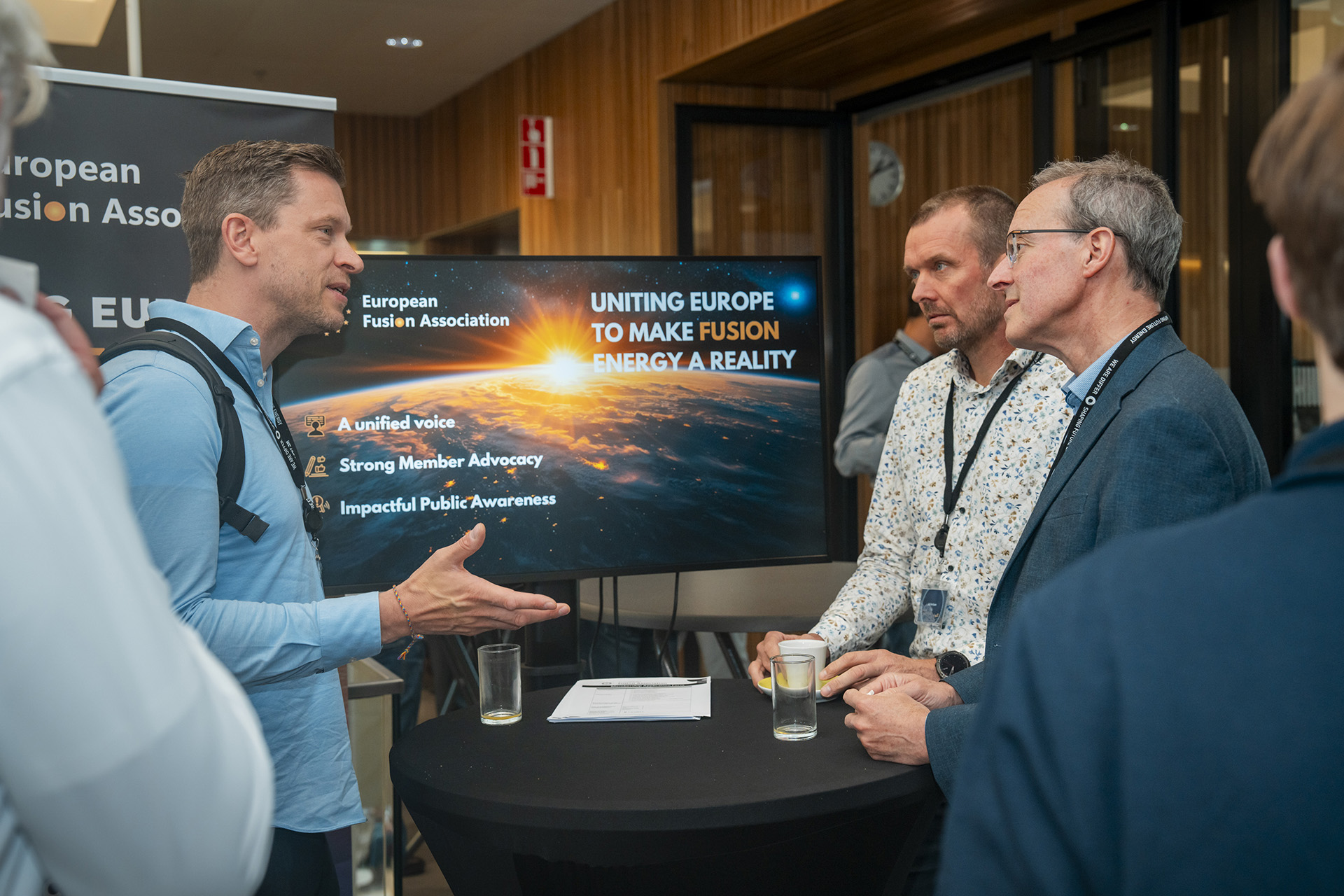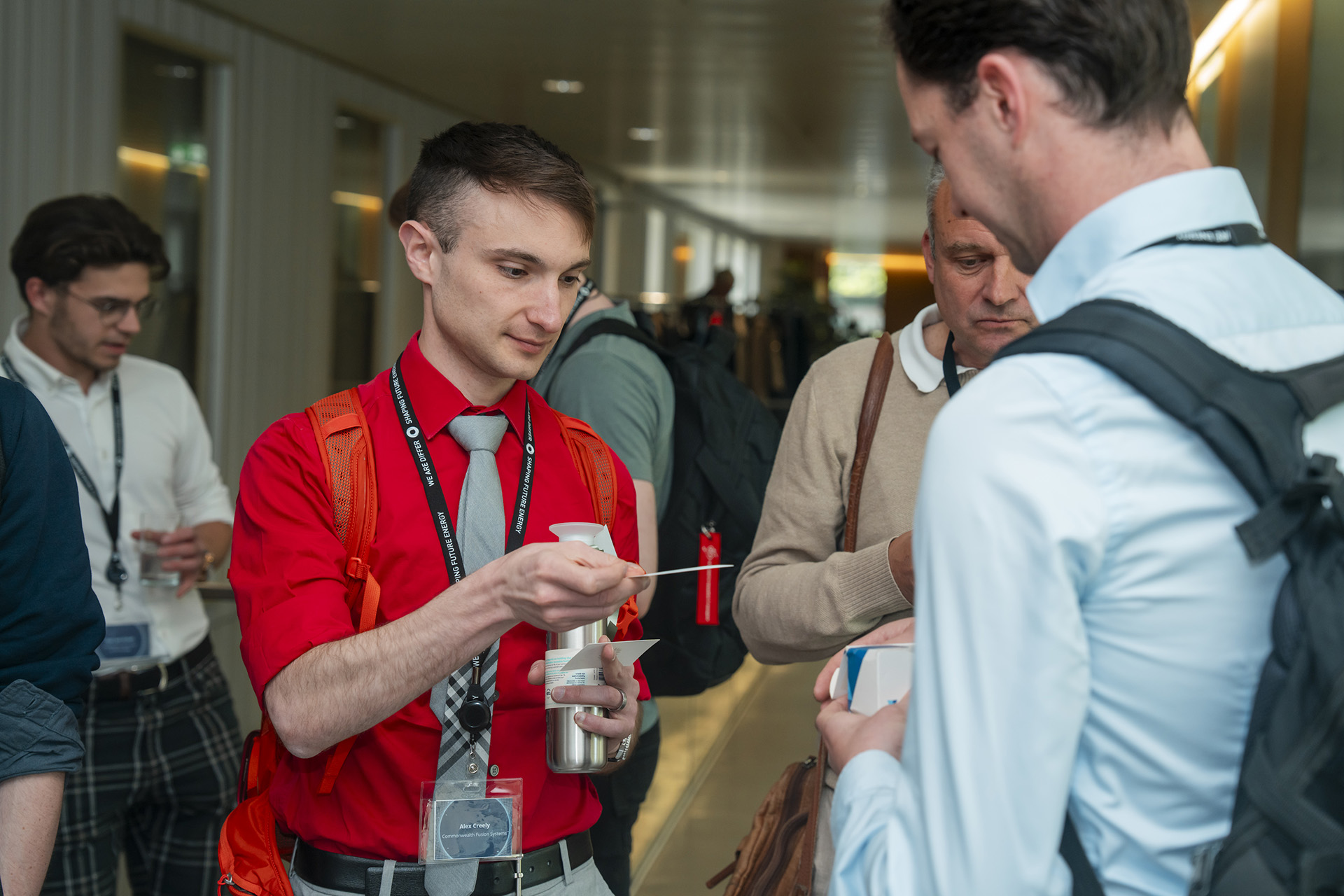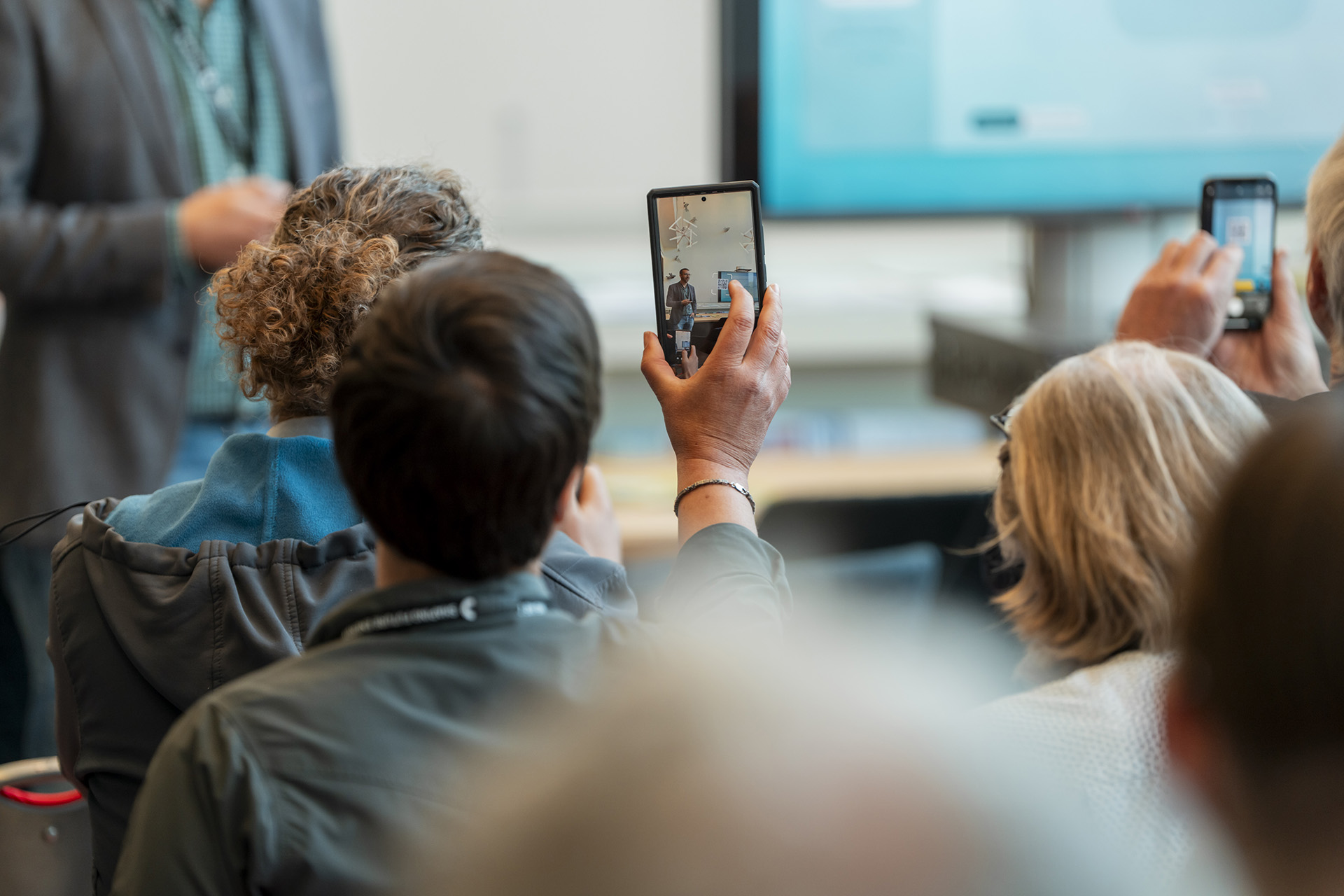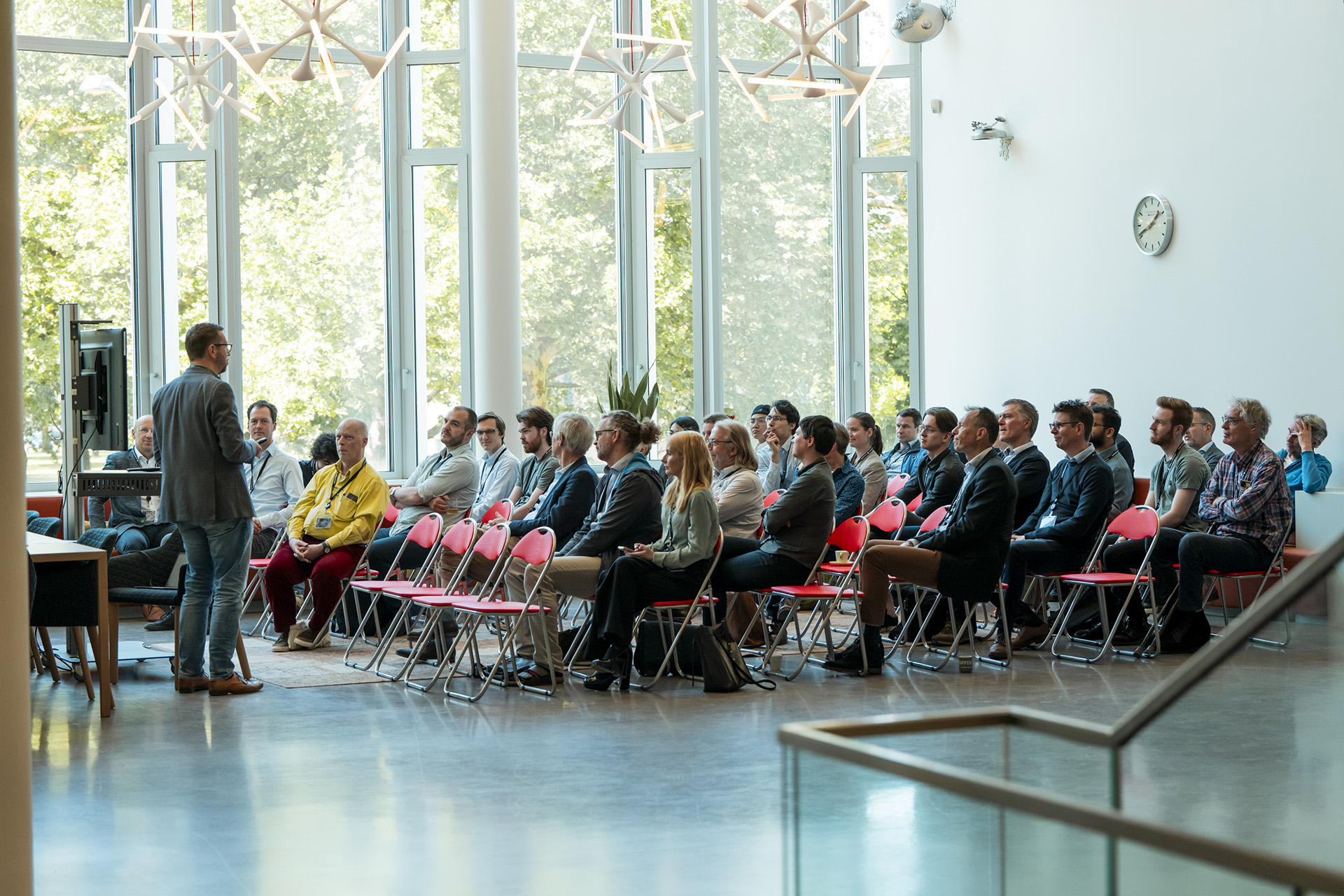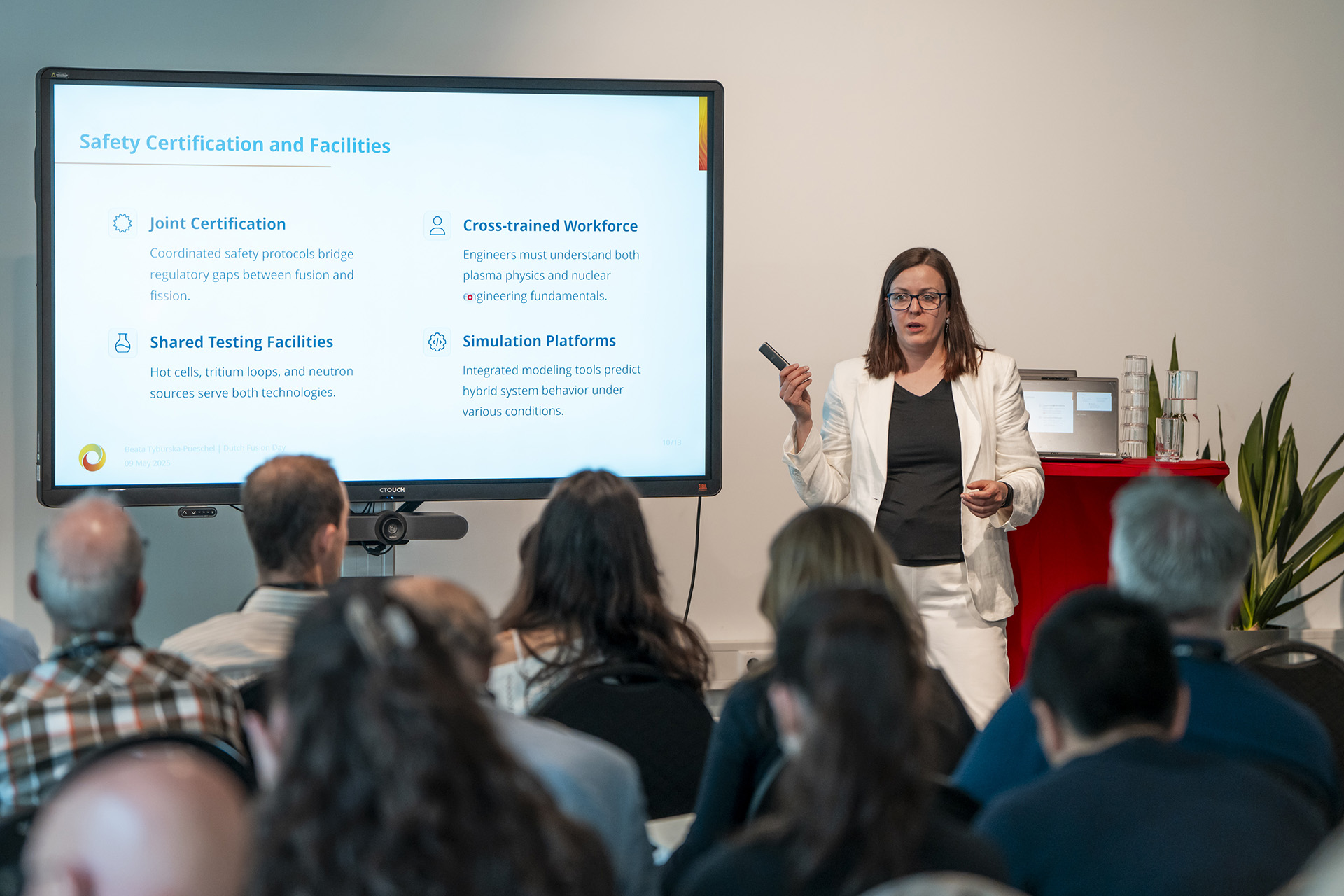‘The only thing that is harder than doing fusion, is raising funds for fusion.’ This statement by key note speaker Klaas de Boer resonated well with the nearly 200 participants of the second Dutch Fusion Day, hosted by DIFFER and co-organized by TU/e EIRES and BigScienceNL on May 9, 2025. A myriad of speakers covered business, research and governmental perspectives on the next and now of nuclear fusion.
The fully packed conference room in the DIFFER building was brought up to speed with the latest in the development of nuclear fusion as an alternative energy source. The field of fusion is in full transition, as chair of one of the parallel sessions during the day Maarten Steinbuch noted. ‘We are transitioning from physics to engineering, from public to private, and from looking at 2050 to focusing on 2030.’
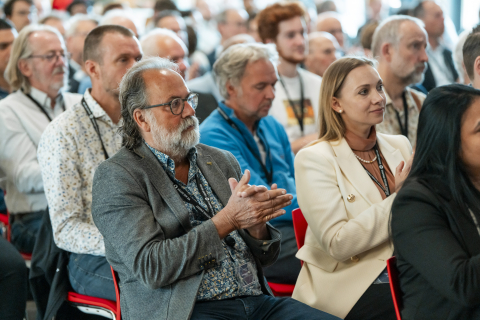
Building on boring physics
The audience got enthused by commercial partners that presented their ambitious milestones. Alex Creely kicked off the day. He is Director of Tokamak Operations at Commonwealth Fusion Systems, a commercial fusion company based in the US that managed to raise over 2 billion dollars in private funding to execute their plans. ‘People like boring power plants that are based on known technology and just produce electricity without too much fuss,’ he stated. That is why the company builds as much as possible on demonstrated tokamak principles, adding its own unique high temperature superconducting magnet technology that enables them to reduce both the size and cost of fusion plants.
‘With our demonstrator SPARC we aim to achieve net zero energy in 2027. That device serves as a stepping stone towards ARC: the first commercial, 400 MW fusion power plant, similar in size to a current coal fired plant. Ultimately, we aim to deploy thousands of ARCs around the world by 2050.’ In order to achieve their goals, the company heavily invests in collaborations with both academic and commercial partners. ‘We have to develop a global supply chain to power an industry that is able to deploy tens of thousands of fusion power plants around the world.’
Funding fusion
How to commercialize fusion was also addressed by Klaas de Boer, Chairman of the Board of General Fusion, a Canadian company that is developing a fusion power technology based on magnetized target fusion. He shared his journey in the fusion landscape from a venture capitalist point of view. ‘The only thing harder than doing fusion, is raising money for it,’ he stated, to subsequently go into the reasons why. ‘One of the challenges I faced when I took my first steps into the field of fusion, was how to assess the viability of a technology that had not been proven yet. How can you perform due diligence on such a long-term investment?’ He named ‘the agency problem’ as another challenge to overcome when it comes to raising funds for fusion.
‘Venture capitalists typically have rather short horizons, in terms of both time and location. When it comes to fusion, you need people who are allowed to invest outside of their mandate. In addition to that, in the fusion field, it is hard to diversify your portfolio as an investor. Essentially, you are producing a commodity, translating into a one dimensional risk profile.’ Still, not all hope is lost, he ended on a more positive note. ‘In the US, there are currently four private fusion companies that have each raised more money than the entire public fusion sector in Europe. I am convinced that someone will build the ASML of fusion. The race is still open. The question is: What role do the Netherlands and Europe play?’
Toward a European fusion strategy
To shed light on the European part, Twan van Erp, Policy Officer at the European Commission, explained about the current initiatives at the EU level to support the development of fusion energy. ‘Within the current Euratom Research and Training Programme, which complements the Horizon Europe programme and focusses on nuclear research and education, the European Commission spends M€ 583 on fusion, covering the period 2021-2025.’
At the moment, the European Commission is preparing an overall EU Fusion Strategy, Van Erp explained. ‘There is a global race toward reaching commercialized fusion energy. As Europe, we need to provide pivotal support for our own start-ups in this field. We are currently in a consultation process with stakeholders, and the Fusion Expert Group has recently issued its first opinion paper, identifying five key pillars that leverage research and ITER outcomes, foster a competitive industrial ecosystem, develop a skilled workforce, and drive innovation. I urge you to get involved in this strategy development process, and help us establish European competitiveness in this important field.’
Diving deeper
After the break, the participants divided over three interactive parallel sessions, where they delved deeper into either Materials in Extreme Conditions, System and Control Engineering, and Fission-Fusion Synergies. The sessions were led by Thomas Morgan from DIFFER, Maarten Steinbuch from TU/e, and Beata Tyburska-Pueschel from DIFFER. After these sessions, all attendees reconvened for the closing panel discussion, moderated by Swheta Féher from FEInn Frontiers in Energy Innovation GmbH. On stage, Hans Priem, Business Developer VDL, Wal van Lierop, Founding Partner Chrysalix Venture Capital, Alf Köhn-Seemann, Researcher University of Stuttgart and Board Member FuseNet, and Tugay Anıl Turan, Business Developer DIFFER and ILO Fusion for Energy engaged in a discussion about the road ahead.
National program
One of the first steps to take is to put fusion on the agenda of policymakers, both on a national and on a EU level. ‘At the moment, the Dutch government does not have fusion high on their agenda,’ Anıl Turan said. ‘But because of excellent collaborations between research and industry, and our combined expertise in subjects like system and control engineering, precision engineering, cryogenics and superconducting magnets, we are well positioned to play an important role in a European ecosystem,’ he said. To position Dutch industry in the fusion supply chain, DIFFER has initiated the set-up of a KIC Integrated system design for Nuclear Fusion Power Plants, a ten year research and innovation program to be funded by NWO.
Thinking big
‘We are talking about little Mickey Mouse things here, we should aim much higher,’ Van Lierop boldly stated. ‘The mood in the room here is too subdued. We need to be much more enthusiastic about the merits of this technology to draw in industry that is in need of a solution for their energy problem. Former Google-CEO Eric Schmidt recently warned US Congress that data centers alone will require an additional 67 gigawatts of power by 2030.’ Köhn-Seemann added: ‘To get funds for fusion, investors should know about it first. Educating not only the new workforce but also the general public is key to achieving success.’
‘What’s driving the development of fusion energy is not sustainability, or green energy. It is to provide enough energy to meet the growing demand, no matter how,’ Priem concluded. ‘As a community, as a country, and as Europe, we should make choices and go for it. We should stop talking, and start acting.’ One of the first things the fusion community can do, is to come together at DIFFER on June 23, 2025, to discuss the outlines of a possible KIC program to get things going, chair of the day David van Walderveen closed the meeting with a concrete call to action.
Pictures
Go to the News page.
